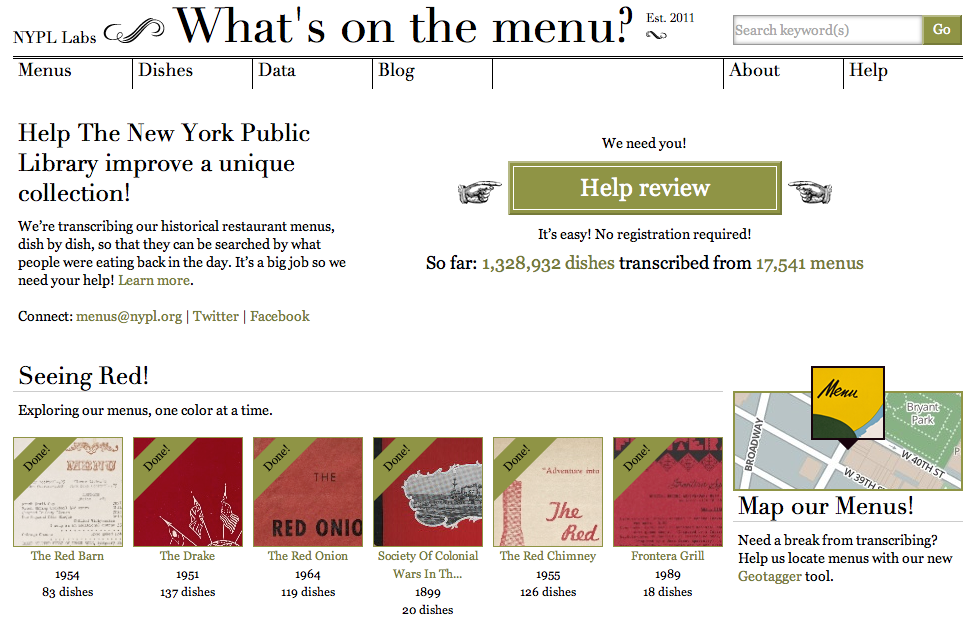
Optimizing crowdsourcing websites for volunteer participation:
An examination of What’s on the Menu? using the MECLABS conversion heuristic (University of Canterbury, 2011)
ABSTRACT
Crowdsourcing is “an umbrella term for a highly varied group of approaches” to outsourcing tasks traditionally performed by specific individuals to a group of people or community through an open call (Howe 2009, p.280). For cultural heritage institutions, crowdsourcing “can continue a long standing tradition of volunteerism and involvement of citizens in the creation and continued development of public goods” (Owens, 2012). For the Digital Humanities, this can extend to digital resources that support new research and interpretation methods such as data visualisation, data mining and computational analysis. Furthermore, “social research models offer one way to show relevance through involving a larger community”, at a time when Humanities’ “social contract with society is being challenged” (Rockwell, 2012, pp.151).
As technology continues to enable online participation and collaboration in new ways, volunteers are assisting with descriptive tagging, geo-tagging, and identification of digitised objects, proofreading Optical Character Recognition (OCR) text, manuscript transcription, text encoding, translation, and content creation.
The success of such projects relies on sufficient volunteer participation over a period often limited by project budgets and resources. An understanding of website optimization can empower project teams to invite, instruct and incentivize ‘the crowd’ more effectively, to promote and sustain volunteer participation. Website optimization involves clearly defining the objectives of the website and aligning them with the objectives of the online visitor. It aims to maximize visitor motivation and relevant incentives, and minimize sources of frustration and concern.
Website optimization spans the disciplines of usability, human-computer interaction, and user-centred design, which are approaches traditionally used by website developers, designers, and copywriters. For cultural heritage and Digital Humanities project teams outsourcing web development and design, it’s important to understand and clearly convey website objectives and influential factors to the contractor. For those relying on staff in-house, who may have little or no experience with crowdsourcing campaigns, the ability to identify and articulate these priorities is even more essential. Evaluation of existing crowdsourcing models will also benefit from an understanding of the main elements impacting on the perceptions, actions and experience of online visitors.
This paper gives an overview of website optimization in theory and practice, and explains how a commercially based optimization framework is applicable for non-profit crowdsourcing websites. The paper goes on to present three-part examination of What’s on the Menu?, a crowdsourcing project driven by New York Public Library, using the MECLABS conversion heuristic. The examination focuses on the three main objectives for cultural heritage and Digital Humanities crowdsourcing projects: convert online visitors to potential volunteers, convert potential volunteers to active contributors, and incentivize contributors to increase participation.
PRESENTATIONS
Digital Humanities Australasia conference 2012, Canberra, Australia
National Digital Forum 2012 conference, Wellington, New Zealand
NDF 2012 presentation (PDF)
REPORT
BA Honours dissertation (PDF)
